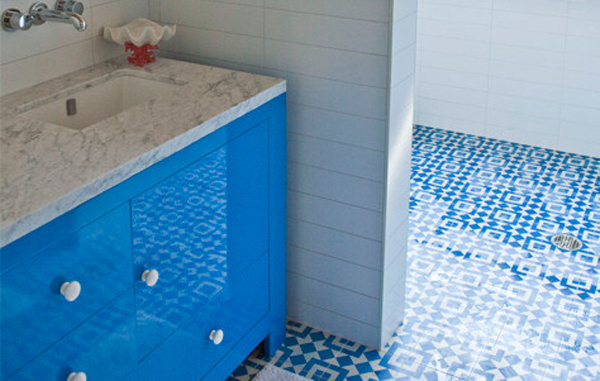The Truth About Cement
The truth about cement is finally being revealed. Cement is often misconstrued as having a bad reputation for being a material that is hard to work with. Today this tough material is being revolutionized with new cement designs like beautiful 3-D graphic tiling and Eco-friendly surfaces. I am happy to say cement is now a great friendly material for home design. So what is the truth about cement?
First up is the new Carbon Negative Cement by Novacem. “The company’s carbon negative cement already performs at levels comparable to conventional cement in several applications, including masonry products. Magnesium silicates are easily available and widely dispersed throughout the world (accessible worldwide reserves are estimated to be greater than 10,000 billion tons), so the technology has enormous potential to offset the high ecological price tag of conventional cement.” says Contract Design.
Carbon Negative Cement by Novacem

Next is a look at Profiled Tiles by Portland Cement Co. An amazing cement that you can create dimension surfaces even with circles as seen below. Its is “a stylish cement product with a primarily aesthetic orientation. The Profiled Tile line consists of ten complex tile designs that duplicate the look of everything from exterior stone facades to interior bamboo paneling.” says the design blog 3rings.
Profiled Tiles by Portland Cement Co.

The final newest cement is the Eco Collection of Cement Tiles by Granada Tile. We all know, today being Eco-friendly is of a huge priority not only for designers but also for our clients. Now behold a cement that is not only Eco-friendly, it is stunning and beautiful in any space. ” The Eco Collection definitely has a Spanish aesthetic, but—like each of Granada Tile’s six distinct collections—it’s versatile enough to work with a variety of décor: the bold patterns and dynamic colors can look just as beautiful in a historic mansion as in a new loft.”The company’s comprehensive environmental policy stipulates sun drying and curing (instead of an energy intensive kiln); recycling all water for re-use during manufacturing; using local materials like sand, soapstone, and limestone; and re-using all concrete waste, including cement and cement dust from tiles that don’t pass quality control.” says design blog 3rings.
The Echo Collection of Cement Tiles by Granada Tile



Melanie Stephens
Thank you for including Granada Tile in your blog. Given how much cement surrounds us, it is ironic how misunderstood it is as a material. For more information about the ways Granada Tile is pursuing being environmentally friendly, please check out this section of our recently expanded website: http://www.granadatile.com/environment.php.
Cheers!